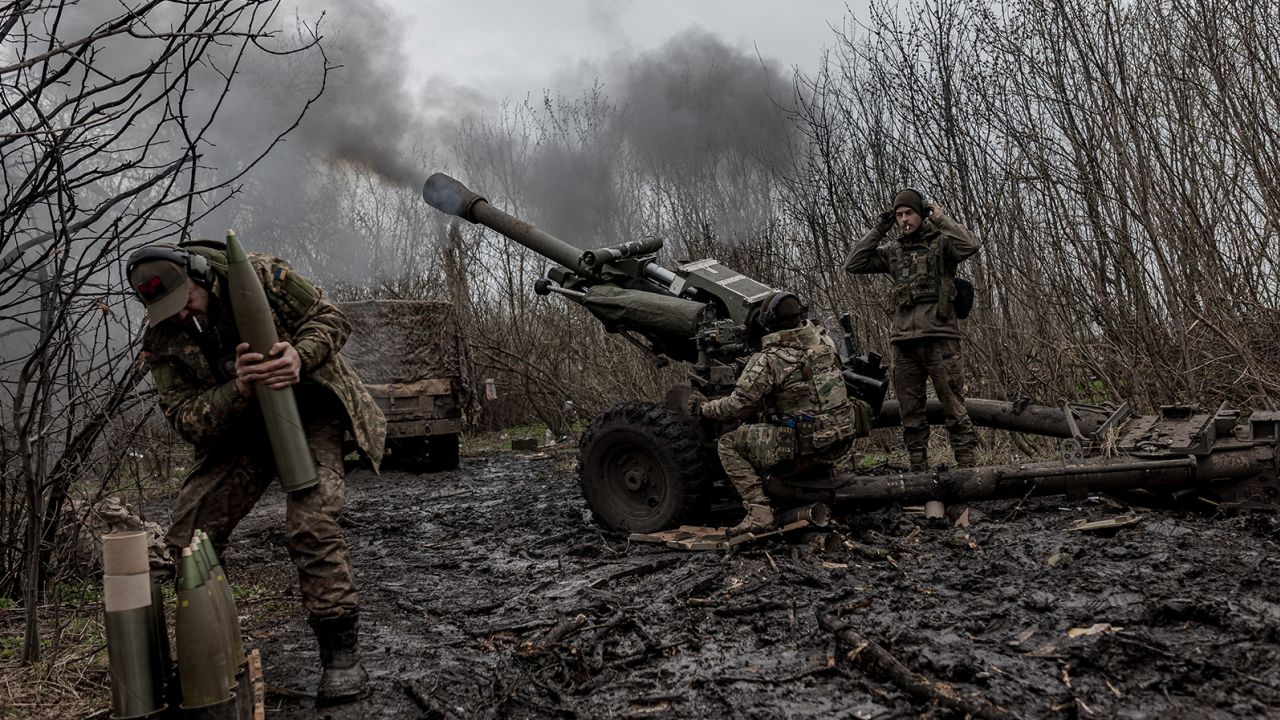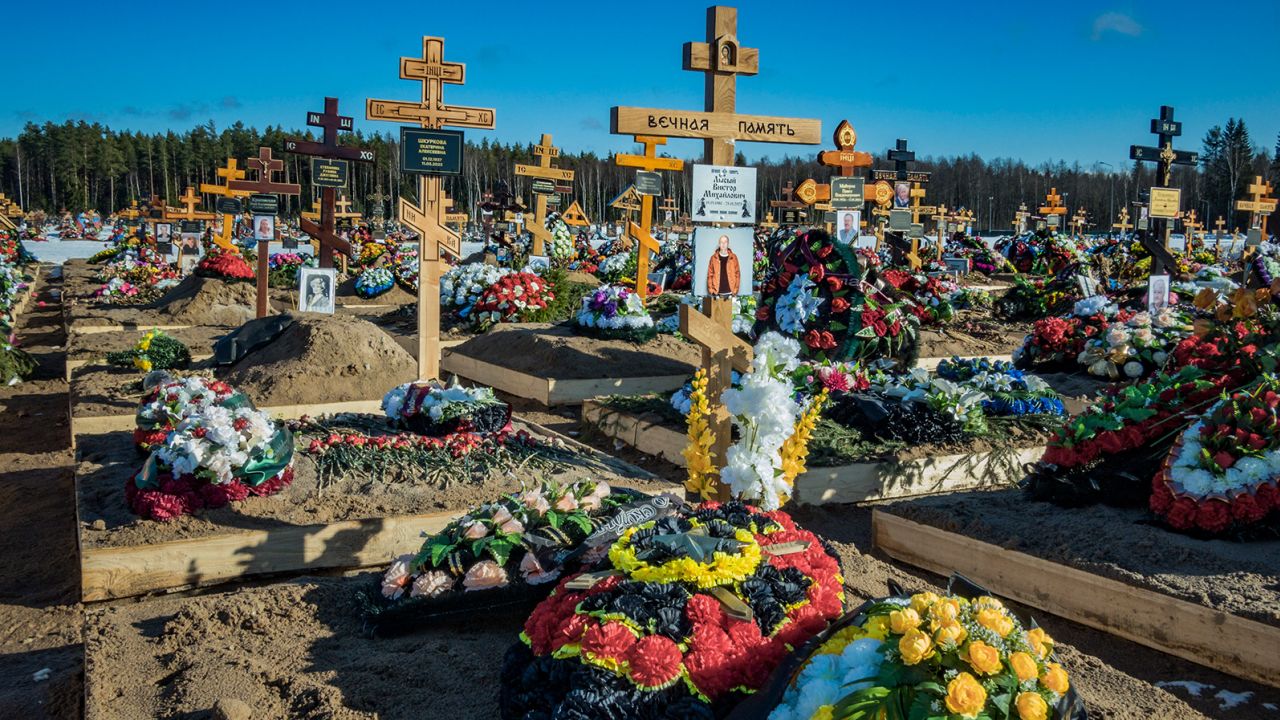Natasha Bertrand and Kylie Atwood

Ukrainian soldiers of the Da Vinci Wolves Battalion fire artillery in the direction of Bakhmut on April 3, 2023.
Highly classified Pentagon documents leaked online in recent weeks have provided a rare window into how the US spies on allies and foes alike, deeply rattling US officials, who fear the revelations could jeopardize sensitive sources and compromise important foreign relationships.
Some of the documents, which US officials say are authentic, expose the extent of US eavesdropping on key allies, including South Korea, Israel and Ukraine.
Others reveal the degree to which the US has penetrated the Russian Ministry of Defense and the Russian mercenary organization Wagner Group, largely through intercepted communications and human sources, which could now be cut off or put in danger.
Still others divulge key weaknesses in Ukrainian weaponry, air defense, and battalion sizes and readiness at a critical point in the war, as Ukrainian forces gear up to launch a counteroffensive against the Russians – and just as the US and Ukraine have begun to develop a more mutually trusting relationship over intelligence-sharing.
Ukraine has already altered some of its military plans because of the leak, a source close to Ukrainian President Volodymyr Zelensky told CNN.
The Pentagon has stood up an “interagency effort” to assess the impact of the leak, Pentagon deputy press secretary Sabrina Singh said Sunday.
“The Department of Defense continues to review and assess the validity of the photographed documents that are circulating on social media sites and that appear to contain sensitive and highly classified material,” Singh said in a statement. “An interagency effort has been stood up, focused on assessing the impact these photographed documents could have on U.S. national security and on our Allies and partners.”
Singh added that US officials spoke with allies and partners over the weekend regarding the leak, and informed “relevant congressional committees.”
The leak has also led the Pentagon to take steps to tighten the flow of such highly sensitive documents, officials said, which are normally available on any given day to hundreds of people across the government.
The Joint Staff, which comprises the Defense Department’s most senior uniformed leadership that advises the president, is examining its distribution lists to look at who gets these reports, a Defense official said. Many of the documents had markings indicating that they had been produced by the Joint Staff’s intelligence arm, known as J2, and appear to be briefing documents.
Singh said Friday that the department is continuing to review the matter and had made a referral to the Justice Department, which separately confirmed to CNN that it has launched an investigation into the source of the leak.
Diplomats frustrated
The documents appeared online last month on the social media platform Discord, according to screenshots of the posts reviewed by CNN. The posts are photos of crumpled documents laid on top of magazines and surrounded by other random objects, such as zip-close bags and Gorilla Glue. It is as if they had been hastily folded up and shoved into a pocket before being removed from a secure location, a source familiar with these kinds of documents told CNN.
A Discord spokesperson confirmed in a statement Sunday that they are cooperating with law enforcement on the investigation.
While spying is an inevitable part of how the US intelligence community collects information globally, diplomats from some of the countries mentioned told CNN it was frustrating – and harmful to the US reputation – to see that information exposed publicly.
US allies are doing damage assessments, scrambling to determine whether any of their own sources and methods have been compromised by the leak.
“We expect the US to share a damage assessment with us in the coming days, but we cannot wait for their assessment. Right now we are doing our own,” said an official from a country that is part of the Five Eyes intelligence-sharing arrangement with the US, which includes Australia, Canada, New Zealand and the United Kingdom.
“We are poring over these documents to figure out if any of the intelligence originated from our collection,” the official said.
A second Five Eyes nation official expressed concern about the leaked Ukraine war information handicapping the country on the battlefield.
The official also pointed out that it was alarming to see one of the documents from February titled “Russia-Ukraine: Battle for the Donbas Region Likely Heading for a Stalemate Throughout 2023.” The document notes the challenges with assessing the “endurance of Ukraine’s operations.”
“Gains for Ukraine will be hard to accomplish, but it does not help to have the private US assessment pointing to a likely yearlong stalemate revealed publicly,” the official said.
Spying on friends
CNN has reviewed 53 leaked documents, all of which appear to have been produced between mid-February and early March.
One document reveals that the US has been spying on Zelensky. That is unsurprising, said the source close to Zelensky, but Ukrainian officials are deeply frustrated about the leak.
The US intelligence report, which is sourced to signals intelligence, says that Zelensky in late February “suggested striking Russian deployment locations in Russia’s Rostov Oblast” using unmanned aerial vehicles, since Ukraine does not have long-range weapons capable of reaching that far.
Signals intelligence includes intercepted communications and is broadly defined by the National Security Agency as “intelligence derived from electronic signals and systems used by foreign targets, such as communications systems, radars, and weapons systems.”
The intelligence could explain public US comments about not wanting to give Ukraine long-range missile systems over fears that Kyiv will use them to strike inside Russia. But Ukraine has pledged not to use US-provided weapons to do so.
Relatedly, another intelligence report says that China could use Ukrainian strikes on targets deep inside Russia “as an opportunity to cast NATO as the aggressor, and may increase its aid to Russia if it deems the attacks were significant.”
Mykhailo Podolyak, the adviser to the head of the Office of the President of Ukraine, said on his Telegram channel Friday that he believes the documents that have been disseminated are inauthentic, have “nothing to do with Ukraine’s real plans” and are based on “a large amount of fictitious information” disseminated by Russia.
Yet another document describes, in remarkable detail, a conversation between two senior South Korean national security officials about concerns by the country’s National Security Council over a US request for ammunition.
The officials worried that supplying the ammunition, which the US would then send to Ukraine, would violate South Korea’s policy of not supplying lethal aid to countries at war. According to the document, one of the officials then suggested a way of getting around the policy without actually changing it – by selling the ammunition to Poland.
The document has already sparked controversy in Seoul, with South Korean officials telling reporters that they plan to raise the issue with Washington, according to The New York Times.
Officials from other countries also plan to raise the matter with Washington, but they have not had those conversations yet as they wait to see what the Biden administration says about the leaked documents in the coming days, multiple diplomats said.
An intelligence report about Israel, meanwhile, has sparked outrage in Jerusalem. The report, produced by the CIA and sourced to signals intelligence, says that Israel’s main intelligence agency, the Mossad, had been encouraging protests against the country’s new government – “including several explicit calls to action,” the report alleges.
The Israeli Prime Minister’s Office responded on the Mossad’s behalf Sunday morning, calling the report “mendacious and without any foundation whatsoever.”
“The Mossad and its senior officials did not – and do not – encourage agency personnel to join the demonstrations against the government, political demonstrations or any political activity,” the statement said. “The Mossad and its serving senior personnel have not engaged in the issue of the demonstrations at all and are dedicated to the value of service to the state that has guided the Mossad since its founding.”
Another classified document, also sourced to signals intelligence, offers a window into how the US assesses its allies’ policies – and how the US can exert its influence to change them.
The document, titled “Israel: Pathways to Providing Lethal Aid to Ukraine,” says Jerusalem “likely will consider providing lethal aid under increased US pressure or a perceived degradation” in its relationship with Russia.

Israelis opposed to Prime Minister Benjamin Netanyahu's judicial overhaul plan demonstrate in Tel Aviv on March 26, 2023.Ohad Zwigenberg/AP
Another document reveals what the US thin ks about some European countries’ intentions to donate fighter jets to Ukraine, which has been asking for the planes for over a year.
On February 23, the report says, Bulgaria expressed willingness to donate its fleet of MiG-29 jets to Ukraine – a “challenge,” the report assesses, because it will leave Bulgaria without fighter aircraft to fulfill its air policing missions until US-made F-16s are delivered, “which is at least a year away.”
Spying on foes
The massive leak also reveals that US penetration of Russia’s Defense Ministry and the mercenary organization Wagner Group goes deeper than previously understood.
Much of the information about Russia was gathered via intercepted communications, raising concerns that the Russians might now change their method of communication to better conceal their planning.
Human sources could be at risk too. Maps of Russian troop movements and capabilities included in the trove of documents are sourced in part to human confidential sources, prompting fears among US officials that those assets could now be in danger.
The documents show that the US has been able to intercept Russian targeting plans, down to which exact thermoelectric power plants, electric substations and railroad and vehicle bridges Russian forces planned to attack inside Ukraine and when.
The US was also able to intercept the Russian strategy for combating NATO tanks due to enter Ukraine beginning in April. The plan “called for establishing three fire zones based on range – long, medium, and short – with each zone covered by specific weaponry and unit types,” the US intelligence report says.
Highlighting US concerns about the Wagner Group, which has thousands of personnel operating in Ukraine, the documents discuss Wagner’s renewed recruitment of Russian prisoners to fight in Ukraine – underscoring its leader’s “continued influence with Putin,” one report says – and the group’s plans to strengthen its presence across Africa and in Haiti.
The documents also provide a window into casualty figures on both sides, numbers that are notoriously difficult to estimate accurately and that the US has been reluctant to share publicly in detail.

Graves of some of the Wagner Group mercenaries killed during the Russian invasion war in Ukraine are laid in the Beloostrovsky cemetery, outside St. Petersburg.Celestino Arce/NurPhoto/Getty Images
According to one of the documents, Russian forces had suffered 189,500 to 223,000 casualties as of February, including as many as 43,000 troops killed in action. Ukraine, meanwhile, had suffered 124,500 to 131,000 casualties, with up to 17,500 killed in action, the report says.
Bad actors are already using the leaked documents to spread disinformation, analysts say. The document with casualty numbers, for example, was altered in recent weeks to more than halve the number of Russian deaths, before being spread on pro-Russian Telegram channels.
Asked about the images circulating on Twitter and Telegram, Kremlin spokesperson Dmitry Peskov told CNN on Friday that “we don’t have the slightest doubt about direct or indirect involvement of the United States and NATO in the conflict between Russia and Ukraine.”
“This level of involvement is rising, is rising gradually,” he said. “We keep our eye on this process. Well, of course, it makes the whole story more complicated, but it cannot influence the final outcome of the special operation.”
This story has been updated with additional information.
No comments:
Post a Comment